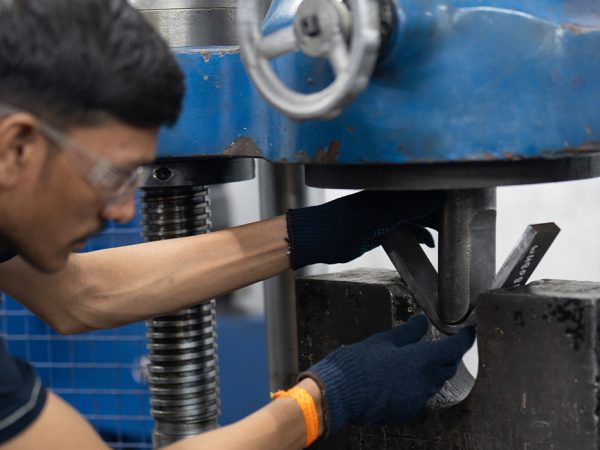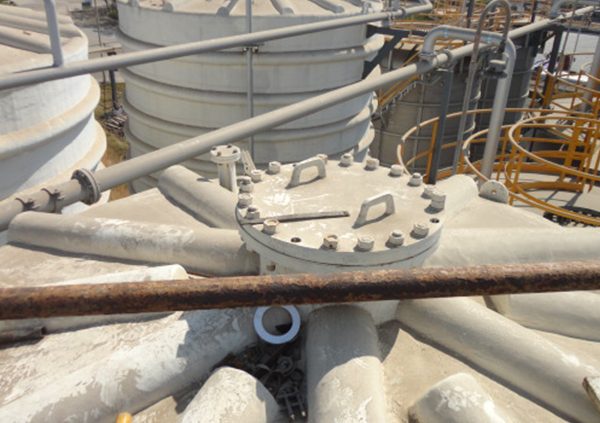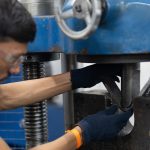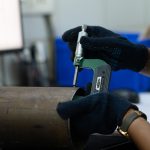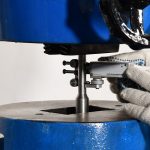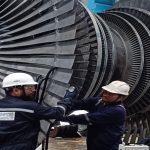Remaining Life Assessment (RLA) is a vital process used to evaluate the present condition, performance, and expected service life of industrial components and equipment. Through systematic inspections and scientific evaluation, RLA analysis helps industries prevent unexpected failures, optimize maintenance schedules, and ensure safe, reliable, and cost-effective operations. This process is especially important for power plants, refineries, petrochemicals, and other heavy industries where equipment operates under extreme conditions.
TCR Advanced Engineering Private Limited is a trusted leader in providing world-class Remaining Life Assessment services. With decades of experience and advanced testing facilities, TCR ensures accurate RLA analysis through proven methodologies, cutting-edge technology, and expert engineering insights. Their approach supports industries in extending equipment life, meeting regulatory compliance, and minimizing downtime. By choosing TCR Advanced, companies gain a reliable partner dedicated to safety, efficiency, and long-term asset performance.
What is the Remaining Life Assessment (RLA)?
Remaining Life Assessment (RLA) is a scientific method used to determine how much usable life is left in industrial equipment, machines, or components that have been in service for many years. Over time, due to continuous exposure to high temperature, pressure, stress, and corrosive environments, equipment like boilers, turbines, heat exchangers, and pipelines start to lose their strength. This is where Remaining Life Assessment plays a vital role.
Through detailed inspection, testing, and RLA analysis, engineers evaluate the current condition of the equipment and predict its safe operating life. This helps industries make informed decisions—whether to continue using the equipment, repair it, or replace it.
The main advantage of RLA is that it prevents unexpected breakdowns, reduces maintenance costs, improves plant safety, and ensures smooth operations. It is widely used in power plants, refineries, petrochemicals, and other industries where equipment reliability is critical.
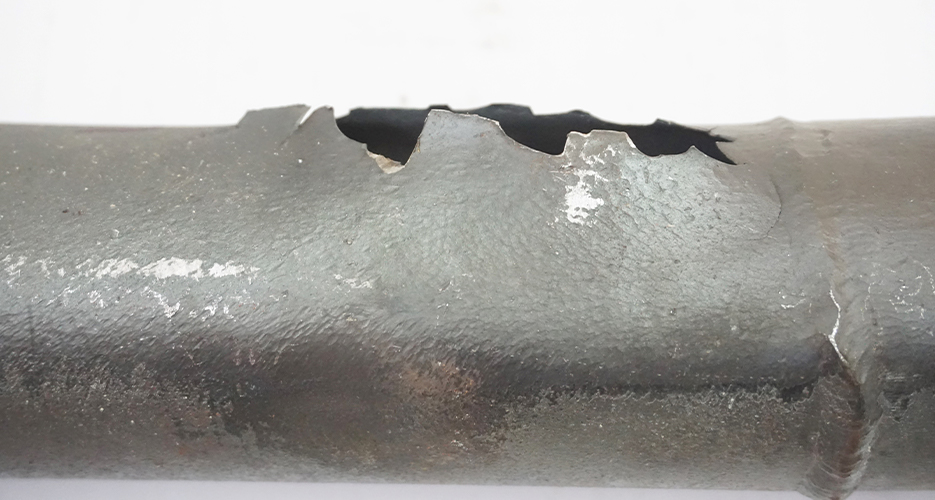
Benefits of RLA Testing
1. Enhances Equipment Safety and Reliability
One of the most important benefits of Remaining Life Assessment (RLA) is improved safety and reliability of industrial equipment. Over years of operation, machinery and components undergo stress, high temperatures, and wear, which can create hidden weaknesses. With the help of RLA testing, these issues can be identified before they turn into major problems. By performing systematic inspections and RLA analysis, companies ensure that their equipment continues to operate safely within its limits. This not only protects workers from accidents but also keeps production uninterrupted. In industries like power generation, refineries, and petrochemicals where safety is critical, Remaining Life Assessment offers peace of mind by confirming that equipment can perform reliably for years to come.
2. Reduces Unexpected Failures and Downtime
Unplanned equipment failure can cause costly shutdowns, delayed production, and even safety hazards. Remaining Life Assessment (RLA) helps prevent such situations by predicting the usable life of machinery and identifying early signs of damage. Through advanced RLA testing techniques such as metallurgical examination, stress analysis, and non-destructive testing, engineers can pinpoint weak areas before they fail. This proactive approach minimizes the risk of unexpected breakdowns. For industries that run 24/7, reduced downtime directly improves profitability. Regular RLA analysis ensures that companies plan repairs and replacements during scheduled maintenance, rather than dealing with sudden failures. This benefit of Remaining Life Assessment saves both time and money while keeping operations smooth.
3. Optimizes Maintenance Planning and Costs
Maintenance is essential, but unnecessary or poorly planned repairs can increase costs without adding value. RLA testing allows companies to optimize their maintenance schedules by giving accurate information about the real condition of their equipment. Instead of replacing parts too early or waiting until it’s too late, Remaining Life Assessment provides a balanced and cost-effective strategy. With precise RLA analysis, industries know exactly when equipment requires repair, replacement, or continued service. This avoids overspending on unnecessary maintenance while ensuring safety and performance are not compromised. The result is smarter resource allocation, lower maintenance costs, and better use of capital budgets. For businesses with expensive assets, Remaining Life Assessment (RLA) is a powerful tool for financial efficiency.
4. Extends Asset Life and Maximizes Investment Value
Industrial equipment is a major investment, and companies aim to use it for as long as possible without risking safety or efficiency. Remaining Life Assessment (RLA) helps achieve this goal by carefully studying the actual working condition of assets. Through detailed RLA testing, companies can continue to operate machinery beyond its original design life—if proven safe by engineers. This way, organizations get maximum value from their investments without premature replacement. Extending asset life also reduces the need for frequent capital expenditures. With the help of expert RLA analysis, industries can confidently extend service life, delay replacement costs, and still maintain safety standards. Ultimately, Remaining Life Assessment allows companies to extract the full value of their assets.
5. Ensures Compliance with Industry Standards and Regulations
Industries such as power plants, oil & gas, and petrochemicals operate under strict regulatory and safety guidelines. Failure to comply can result in penalties, legal issues, and reputational damage. Remaining Life Assessment (RLA) plays a crucial role in meeting these compliance requirements. With the help of detailed RLA testing and documentation, companies can demonstrate that their equipment is safe, reliable, and fit for operation. Regular RLA analysis also supports audits and certifications by providing scientific data and evidence of equipment health. This ensures that organizations not only meet legal obligations but also maintain the trust of stakeholders, employees, and customers. By adopting Remaining Life Assessment, companies align with global best practices while keeping operations safe and legally compliant.
Industries Where RLA is Used
Power Generation Industry
In the power generation industry, boilers, turbines, and pressure vessels operate under extreme temperatures and continuous stress. Over time, these conditions lead to material degradation and reduced efficiency. Through Remaining Life Assessment (RLA), engineers perform detailed RLA testing and RLA analysis to evaluate the safety and performance of critical components. This ensures uninterrupted power supply, minimizes risks of sudden failures, and helps optimize maintenance planning. By using Remaining Life Assessment (RLA), power plants can extend the service life of equipment and reduce downtime.
Oil & Gas / Petrochemical Industry
The oil & gas and petrochemical industry runs complex equipment like pipelines, reactors, and heat exchangers that face high pressure, corrosion, and harsh operating conditions. Any unexpected failure here can result in heavy financial loss and safety hazards. Remaining Life Assessment (RLA) provides detailed insights into the condition of these assets. Through advanced RLA testing and scientific RLA analysis, companies can identify potential risks early, plan maintenance effectively, and avoid accidents. With Remaining Life Assessment, this industry ensures safe, efficient, and reliable operations while meeting strict regulatory requirements.
Chemical & Fertilizer Industry
In the chemical and fertilizer industry, equipment is continuously exposed to aggressive chemicals, high temperatures, and pressure. This environment accelerates wear and corrosion, reducing equipment life. Remaining Life Assessment (RLA) helps determine whether machinery can continue operating safely or requires repair or replacement. With systematic RLA testing and accurate RLA analysis, industries gain valuable data on asset health. This enables them to reduce unplanned shutdowns, maintain product quality, and achieve cost savings. By adopting Remaining Life Assessment, chemical and fertilizer plants extend asset life while ensuring safe operations.
Heavy Engineering
The heavy engineering industry depends on large, expensive machinery such as rolling mills, foundry equipment, and heavy presses. These assets often run continuously under high stress, making their reliability crucial for productivity. Remaining Life Assessment (RLA) provides a scientific way to check their condition. Through expert RLA testing and detailed RLA analysis, companies can detect early signs of wear or damage and plan necessary repairs in advance. This prevents sudden equipment breakdowns, improves operational efficiency, and maximizes investment value. Remaining Life Assessment (RLA) ensures these high-value assets deliver safe and long-term service.
Mining Industry
The mining industry uses heavy-duty machinery like draglines, crushers, and conveyor systems that face extreme loads and harsh working environments. Continuous use often causes fatigue, cracks, and structural damage. Remaining Life Assessment (RLA) plays an essential role here by evaluating the safe working condition of mining equipment. With specialized RLA testing and in-depth RLA analysis, engineers help mining companies identify risks before they lead to costly downtime. This proactive approach extends the life of machinery, reduces maintenance costs, and keeps operations safe. Through Remaining Life Assessment (RLA), the mining industry achieves reliability and efficiency even under tough conditions.
Why Choose TCR Advanced for RLA Analysis
Choosing the right partner for Remaining Life Assessment (RLA) is critical to ensure the safety, reliability, and performance of your equipment. TCR Advanced Engineering Private Limited stands out as a trusted expert in this field, delivering accurate and dependable solutions through its decades of experience.
At TCR, every RLA analysis is carried out with precision using advanced techniques, state-of-the-art laboratories, and globally accepted standards. Their team of highly skilled engineers and metallurgists performs thorough RLA testing to identify even the smallest signs of wear, damage, or material degradation. This scientific approach ensures industries receive reliable insights about the actual health and remaining service life of their assets.
By partnering with TCR Advanced, companies gain much more than just data. They receive actionable recommendations that help optimize maintenance schedules, extend asset life, minimize downtime, and improve overall plant safety. TCR has a proven track record of supporting critical industries such as power generation, oil & gas, petrochemicals, and heavy engineering with its Remaining Life Assessment expertise.
When safety, compliance, and long-term performance matter, TCR Advanced is the name you can trust for accurate and effective RLA analysis.
Last Words
Remaining Life Assessment (RLA) has become an essential practice for industries that rely on critical equipment to operate safely and efficiently. From preventing unexpected breakdowns to extending asset life, RLA testing and RLA analysis offer unmatched value to organizations across power, oil & gas, petrochemicals, mining, and heavy engineering sectors. TCR Advanced Engineering Private Limited, with its technical expertise and proven methodologies, ensures that clients receive accurate assessments and actionable solutions. By choosing TCR, companies can confidently achieve safety, compliance, and long-term reliability of their assets. For industries where performance and safety cannot be compromised, Remaining Life Assessment (RLA) is not just a service—it is a necessity.
FAQs
Q1. What is the Remaining Life Assessment (RLA)?
Remaining Life Assessment (RLA) is a process to determine the safe operating life left in industrial equipment by using detailed inspections, RLA testing, and RLA analysis.
Q2. Why is RLA testing important for industries?
RLA testing helps industries prevent sudden equipment failures, reduce downtime, and optimize maintenance costs while ensuring safe and reliable operations.
Q3. Which industries benefit the most from RLA analysis?
Power plants, oil & gas, petrochemicals, fertilizers, mining, and heavy engineering industries rely heavily on RLA analysis to extend equipment life and maintain compliance.
Q4. How often should Remaining Life Assessment (RLA) be done?
The frequency depends on equipment type, age, and operating conditions. Generally, RLA is recommended after 100,000 hours of operation or when performance degradation is observed.
Q5. What methods are used in RLA testing?
RLA testing includes non-destructive testing, metallurgical analysis, stress evaluation, and mechanical testing to check for cracks, corrosion, wear, and material fatigue.
Q6. Why choose TCR Advanced for RLA analysis?
TCR Advanced combines decades of expertise, advanced labs, and skilled engineers to deliver precise Remaining Life Assessment (RLA) services, helping industries operate safely and efficiently.

